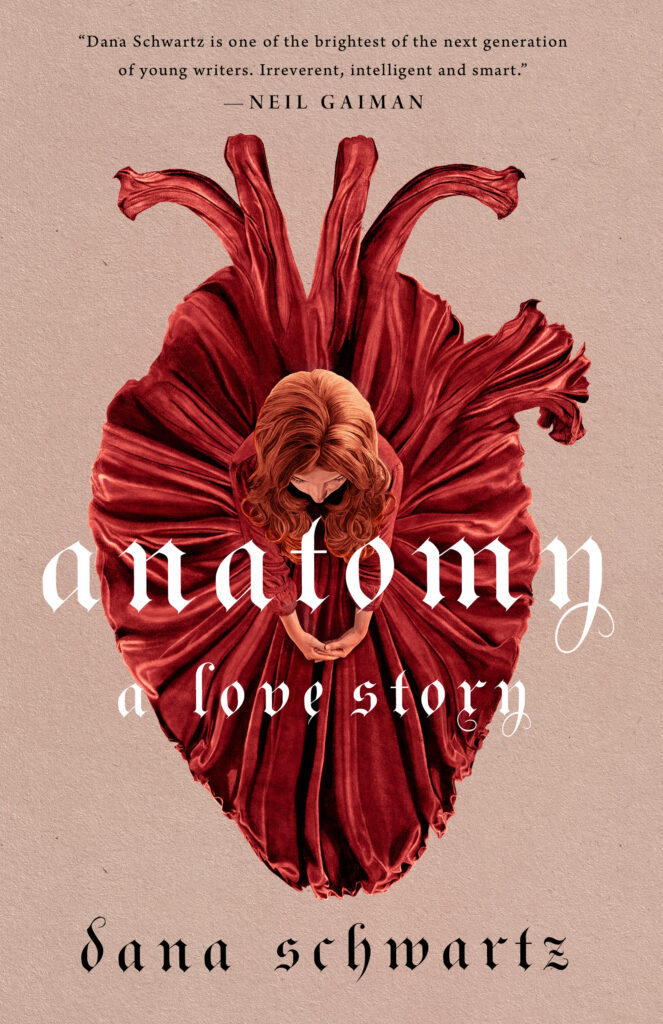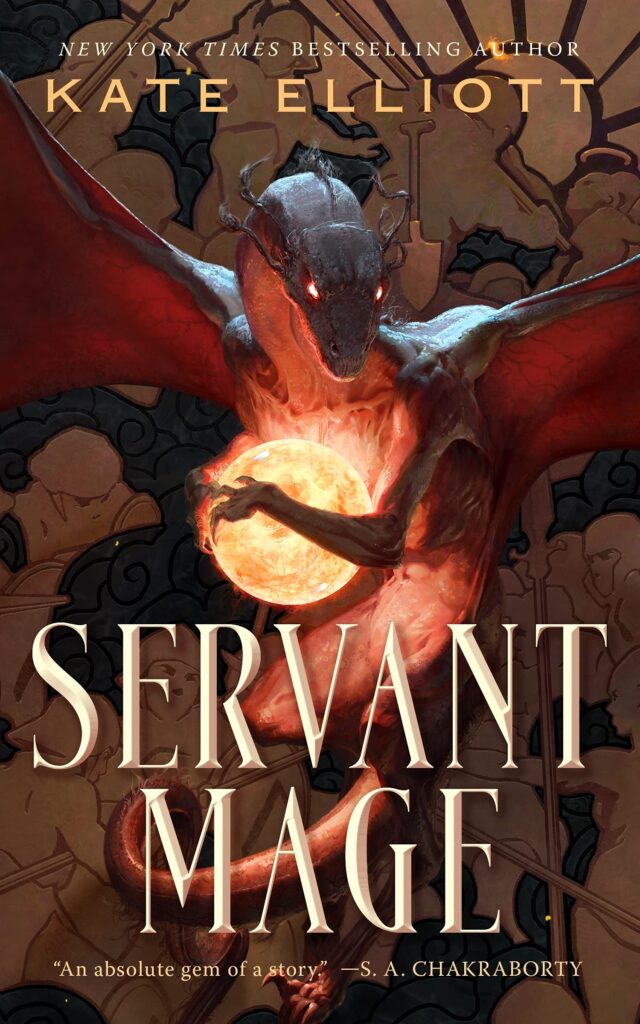
Genre: Gothic
Audience: YA
Series?: Standalone
Rating: Not for me
For fans of: Stalking Jack the Ripper, Titanic, Tuck Everlasting, Mary Shelley, rich girl/poor boy romance, old anatomical drawings, plague stories
I requested a review copy of Anatomy: A Love Story after hearing Dana Schwartz’s guest appearance on the podcast You Are Good. Sarah Marshall, one of the podcast’s hosts, called it a “grave-robber YA book,” and I was in.
It helps that cover is absolutely gorgeous. It features a red-haired white young woman in a long red gown, viewed from above so that her skirts make an anatomical heart. The font is bold and gothic.
Unfortunately, though I liked the book, it didn’t quite live up to the expectations I had based on the podcast and cover.
The book is set in Edinburgh, 1817, and told through the alternating perspectives of lady Hazel Sinnett and resurrection man Jack Currer.
Here’s my first problem: At first, Schwartz sticks to the convention of maintaining one consistent perspective per chapter, but later, Jack will get a few paragraphs or even just a single sentence in the middle of a Hazel chapter, and vice versa. Either approach (alternating between or within chapters) would be fine, but I found the lack of consistency both confusing and frustrating.
On the other hand, I loved Hazel as a character. She’s a fiercely independent and powerfully lonely young woman trying to delay what she sees as an inevitable marriage to her cousin because she wants to be a surgeon.
This is doubly embarrassing for her cousin/future husband. Ladies aren’t supposed to have professions, and surgeons are regarded as the lowest kind of medical professional:
“If you wanted to pretend that you were going to become a physician–or a nurse–I suppose that would be one thing. But surgery–Hazel, surgery is the field for men with no money. No status. They’re butchers, really!”
Which, fair. Anesthesia hasn’t been invented yet, and surgeons won’t even start routinely washing their hands for another fifty years.
When we meet her, she’s gathering a dead frog and some makeshift lightning rods to see if she can harness the electricity of a gathering storm to reanimate the dead. She’s ruthless and a little cold in a way I don’t think I’ve ever seen from a female protagonist. Definitely not a young female protagonist that the narrative regards as uncompromisingly good.
When the local surgeon refuses to teach Hazel because of her sex, she makes a wager with the famous Dr. Beecham:
“The conditions: You will sit the Physician’s Examination at the end of this term. If you pass, I shall open the course to any women who wish to attend, although I warn you there may not be quite so many with your peculiar predilection as you seem to believe. And, in the unlikely event that you do pass, I will also offer you an apprenticeship–with me–at the university hospital …
“Let’s say that if you do not pass the Physician’s Examination, you’ll be unable to sit it in the future. This larger experiment, of a female surgeon, will be considered concluded.”
But Beecham warns Hazel that it will not be possible for her to pass the practical examination with only theoretical knowledge. She needs hands-on experience.
Enter Jack Currer, a poor boy who lives in the rafters of a theater and steals corpses (but never their belongings, which is a more serious crime) to make ends meet. Medical schools require stolen corpses to teach anatomy and surgery because it’s illegal to practice on anyone but executed criminals, and there aren’t enough of those to go around.
Their star-crossed romance is painfully Romeo and Juliet. When he first meets Hazel, Jack believes he’s in love with the prima ballerina at his theater. Hazel is engaged to her cousin. Their families aren’t at war (Jack doesn’t have any family.), but there’s plenty of blood and death, anyway. They share their first kiss in a graveyard, sitting on top of a coffin. Hazel’s horse is named Rosalind.
It worked for me because Jack challenges Hazel, and I appreciate a narrative that recognizes what a relief it is to have someone take you seriously enough to argue with you. They have some cute banter early on:
The boy grinned and winked, although it might have just been him squinting against the setting sun … “I don’t find myself cavorting with high society ladies like yourself too often, so doesn’t strike me as an introduction one needs to make.”
“We’ve already met. Twice.” Hazel reasoned.
“Aye, but is it really meeting if I haven’t given ye a name?” he said, and this time he winked for real.
I also liked their interdependency. Neither Jack nor Hazel can achieve their goals without help from the other, and neither exists purely to help the other grow as a character. At first.
Then, it abruptly stopped working for me. Jack lost all agency. He became a prop in Hazel’s story in a way that felt a lot like a superhero’s girlfriend alternately nagging him and needing to be rescued. It wasn’t even like that loss of agency pushed Hazel to make any significant changes, it just made it hard to remember why Hazel supposedly cared so much about Jack in the first place.
Around this time, the book took a hard shift for the gothic. I don’t know if I can say it was surprising, given the cover, but the first three-quarters of the book are solidly historical fiction. There are no obvious speculative elements, and while there’s obviously suspense, it isn’t moonless night on the foggy moors with a wailing that might just be the wind suspense. The tone is pretty standard for a historical YA.
None of this felt like a twist. Instead, it felt like I was suddenly reading a different book, and I didn’t care what happened because the characters shared only surface details with the characters of the book I had been reading, and everything I had liked about them was gone. I really struggled to finish the book, and I found the ending profoundly unsatisfying.
It’s so frustrating. I enjoyed the majority of the book, and I think putting Jack into the role of the gothic damsel and making Hazel a gothic hero could be interesting, but it just didn’t come together for me.
Disclosure
I received a free ARC from NetGalley in exchange for an honest review.
Can you do me a favor?
If you like this review, please like it on Goodreads and maybe follow me there.
More Info
Publisher: Wednesday Books
Hardback Page Count: 352
Dana Schwartz is everywhere. She has podcasts, Twitter accounts, bylines, a Wikipedia page. I can’t even begin to list all her contact information.
You can support your local independent bookstore by buying Anatomy: A Love Story on Bookshop.org, or grab it on Amazon.

